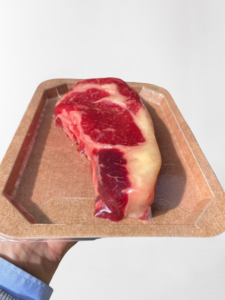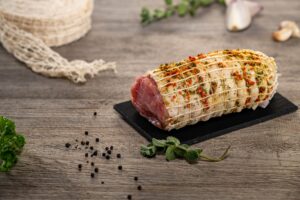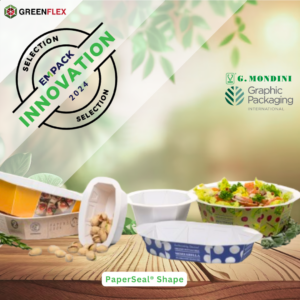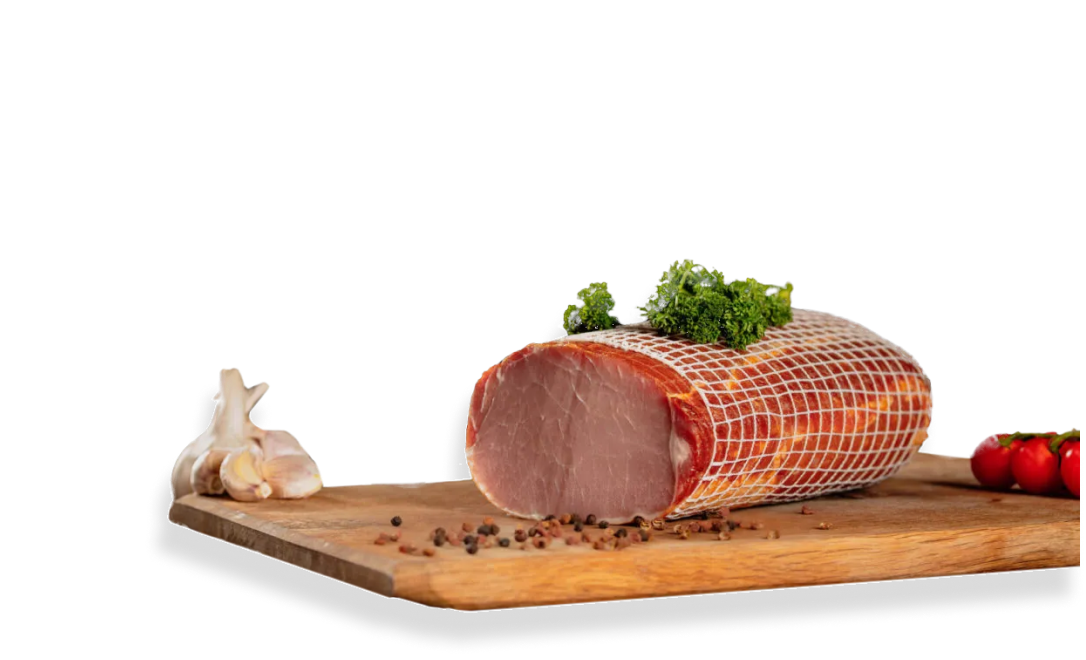Introduction
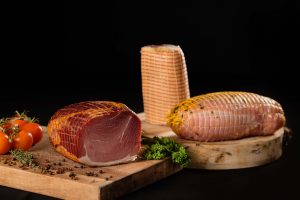
Greenflex commissioned a study done by KU Leuven to investigate the intended use of our different types of meat netting. The intended use of meat netting is to form and shape a variety of meat and poultry products during meat processing, resulting in a pleasing look and consistent shape. Netting is a good substitute for butcher’s twine since it shrinks as the meat cooks and cures, eliminating the need to tighten the twine. Meat netting is ideal for preserved meats.
The research group for technology and quality of animal products made a list of common process conditions during the production of meat products using Greenflex’ nets. The investigated processes are:
- Presentation/packaging of meat products
- Pasteurization
- Smoking
- Roasting
The scope of this study is limited to the most common processes worldwide and does not consider the ability of individual producers to adjust the conditions. Greenflex based its tests on the outcome of this study by assuming the worst-case scenario.
Presentation/packaging of meat products
Presentation netting gives your products the extra dimension they need. Our nets are available in a variety of colors, widths, shapes, and lengths.
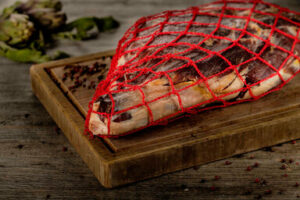 The temperature at which processed meats can be stored and the shelf life depend on the type of product. We distinguish fresh meat products and preparations, pasteurized with or without nitrite curing salt, cured meat products and fermented meat products. In general, we may conclude that the storage of meat products, depending on the type of product and conditions, may vary from two days at a 4 °C up until multiple months.
The temperature at which processed meats can be stored and the shelf life depend on the type of product. We distinguish fresh meat products and preparations, pasteurized with or without nitrite curing salt, cured meat products and fermented meat products. In general, we may conclude that the storage of meat products, depending on the type of product and conditions, may vary from two days at a 4 °C up until multiple months.
– For fresh meat products the desired temperature of max 4 degrees Celsius may not be exceeded. At these conditions, these products can only be preserved for 48 hours after production.
– Pasteurized meat products containing pickling salt can be preserved up to 6 weeks at a temperature of maximum 7 degrees Celsius. When there is no pickling salt present, the retention period cannot exceed 2 weeks.
– Salted meat products (dried and smoked) do not require cold storage and can be stored without problems for several months.
– Fermented products are quite stable from a microbiological standpoint and can be stored unrefrigerated.
Pasteurized meat products

Pasteurization (or pasteurisation) is a procedure that uses heat to destroy microorganisms and extend the shelf life of meat products. The heat is usually lower than the boiling point of water (100 °C). It destroys or inactivates numerous microorganisms, however bacterial spores are not destroyed, hence it is not a type of sterilization. Pasteurisation extends the shelf life of meat by inactivating spoiling enzymes using heat.
The process continues until a certain core temperature is reached and is therefore highly dependent on the size of the product. The worst-case scenario therefore takes place with a cooking ham at an ambient temperature of 85°C for 14 hours.
Smoked meat products
Traditionally, 3 different processes can be described for smoking meat products. Greenflex nettings are highly compatible with these processes. As a worst-case scenario, cold smoking (25°C) for 7 days and hot smoking (75°C) for 2 hours can be considered. In the latter case, smoking coincides with the pasteurization process; both processes occur simultaneously.
Cold smoking takes place in the temperature range 12-25°. This can last from a few hours to 16 days. It is mainly used for products that need to be kept low, such as salami, bacon, dry sausage, filet de saxe,…
Warm smoking involves working at 23-45°C for a period of 4 to 48 hours. Here, a humidity level of 70-80% is usually established.
In hot smoking, the first step is a drying step (40-50°C for 30 min). This is followed by the hot smoke step (over 85°C) and then another drying step. It is usually applied to products that are pasteurized before or after the smoking process.
Roasted meat products
Roasting is the heating of food in dry conditions. This is possible through several types of processes. Roasting can be done in a dry-air oven, in a pan or grill, or on a barbecue. The process may aim to achieve pasteurization or serve as a preparation step before serving the product. Due to the dry conditions and the often-higher temperatures, a more pronounced aroma is formed, and a stronger coloration is obtained in the final product. This is where the Maillard reaction occurs.
As a worst-case scenario, a process at 180°C (dry hot air) for 3 hours can be considered here.
Summary intended use of meat netting
Presentation
The storage of meat products, depending on the type of product and conditions, may vary from two days at a 4 °C up until multiple months.
Pasteurisation
The worst-case scenario would take place with a cooking ham at an ambient temperature of 85°C for 14 hours.
Smoking
As a worst-case scenario, cold smoking (25°C) for 7 days and hot smoking (75°C for 2 hours) can be considered.
Roasting
As a worst-case scenario, a process at 180°C (dry hot air) for 3 hours can be considered here.

